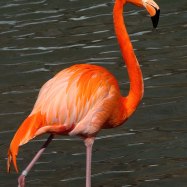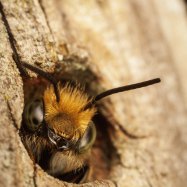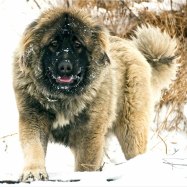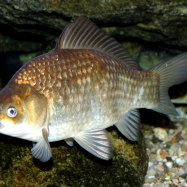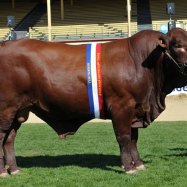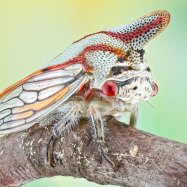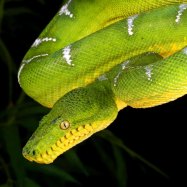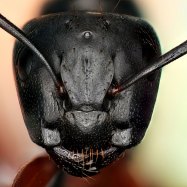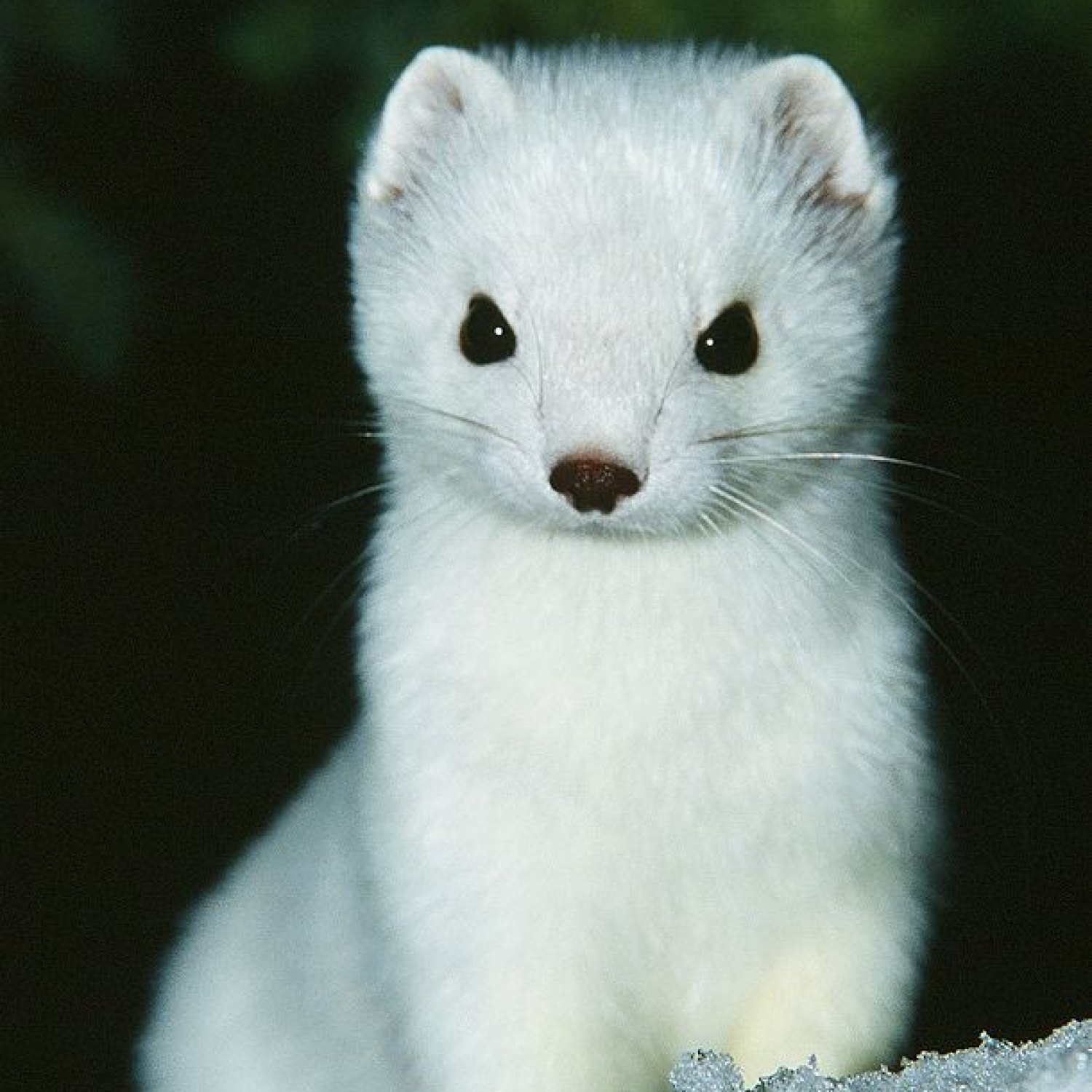
Ermine
20-32 cm (8-13 inches)
The ermine, a mustelid found in North America, Europe, and Asia, is known for its slender and elongated body shape, measuring 20-32 cm (8-13 inches) in length. With its distinct fur pattern and fierce hunting skills, it is commonly referred to as the dancing white weasel. Keep an eye out for this elusive creature on your next nature hike! #ermine #mustelidae #wildlife #naturehike
Animal Details Summary:
Common Name: Ermine
Kingdom: Animalia
Habitat: Tundra, grasslands, forests, wetlands
The Fascinating Ermine: The Snowy Predator of the North
Amidst the vast icy landscapes of the northern hemisphere, there is a small yet fierce creature that roams undetected by many. Its slender and elongated body, adorned with a striking and versatile coat, allows it to blend seamlessly into its surroundings. This remarkable animal is none other than the Ermine, also known as the Mustela erminea.The Ermine belongs to the Animalia kingdom, Chordata phylum, Mammalia class, and Mustelidae family Ermine. It is classified under the order Carnivora, as its primary diet consists of other animals. Let's take a closer look at this animal's exceptional features, habitat, behavior, and role in the ecosystem.
The Winter Warrior
One of the most remarkable things about the Ermine is its stunning coloration. In the winter months, its coat turns pure white, making it almost invisible against the backdrop of snow. This adaptation allows the Ermine to be a highly successful predator, capable of sneaking up on its prey without being noticed.In the summer, the Ermine's coat transitions into a mottled brown color, helping it blend into the tundra, forests, and grasslands. This color change is known as molting and helps it adapt to the change in season. This camouflage serves as a crucial survival tactic, as it allows the Ermine to evade predators such as wolves, owls, and foxes, while also remaining hidden during hunts.
A Compact But Mighty Hunter
Measuring only 20-32 cm (8-13 inches) in length, the Ermine may seem small compared to other predators, but its diminutive size doesn't hold it back Electric Eel. Its long and slender body allows it to navigate through tight spaces easily, making it an efficient hunter and excellent at catching its prey. Its short legs and wide paws are also an advantage, allowing it to move quickly and silently, without sinking into soft snow.As a carnivorous animal, the Ermine's diet consists of small rodents, birds, and insects. It is known to be an opportunistic hunter, meaning it will eat whatever is available. It will also occasionally feast on berries and other plant matter. Its keen sense of smell and hearing, along with its sharp teeth and claws, make it a skilled and adaptable hunter, capable of taking down prey much larger than itself.
A Wide-Ranging Habitat
The Ermine's native habitat spans across the northern hemisphere, including North America, Europe, and Asia, making it a highly adaptable and widespread species. It can thrive in a variety of environments, from the cold and harsh tundra to the forests and grasslands.In the wild, the Ermine can be found living in burrows or crevices, which it lines with grass, moss, and other insulating materials to keep warm during the harsh winter months. It is an excellent digger, using its sharp claws for digging and defending its territory.
An Essential Role in the Ecosystem
The Ermine is a crucial part of its ecosystem, playing a vital role in natural food chains. As a predator, it helps keep the population of prey species in check, preventing overpopulation and preserving the balance in the ecosystem. It also serves as a food source for larger predators, such as wolves and birds of prey, maintaining the delicate balance of the food chain.In addition to its role as a predator, the Ermine also plays a significant role in seed dispersal. As it ventures out to search for food, it moves seeds from one place to another, helping plants spread and thrive in different locations.
Conservation Status
Unfortunately, the Ermine's population is declining in some regions, primarily due to habitat loss and fragmentation caused by human activities. Climate change, pollution, and hunting for fur have also contributed to its decline in some areas. However, in most regions, the Ermine is not considered endangered, and its population is currently stable.A Captivating Creature
In conclusion, the Ermine is a remarkable creature, with its striking coloration, adaptable habitat, and essential role in the ecosystem. Despite its small size, it is a skilled predator and an important part of the food chain. Its ability to blend into its surroundings adds to its mystique, making it a fascinating animal to observe in the wild.As we continue to learn more about this elusive predator, it is vital to protect its habitat and ensure its survival. The Ermine's presence in the northern hemisphere is a testament to the beauty and complexity of nature, and it is up to us to ensure that it continues to thrive in the years to come.

Ermine
Animal Details Ermine - Scientific Name: Mustela erminea
- Category: Animals E
- Scientific Name: Mustela erminea
- Common Name: Ermine
- Kingdom: Animalia
- Phylum: Chordata
- Class: Mammalia
- Order: Carnivora
- Family: Mustelidae
- Habitat: Tundra, grasslands, forests, wetlands
- Feeding Method: Carnivorous
- Geographical Distribution: Northern hemisphere
- Country of Origin: Canada
- Location: North America, Europe, Asia
- Animal Coloration: White in winter, brown in summer
- Body Shape: Slender and elongated
- Length: 20-32 cm (8-13 inches)
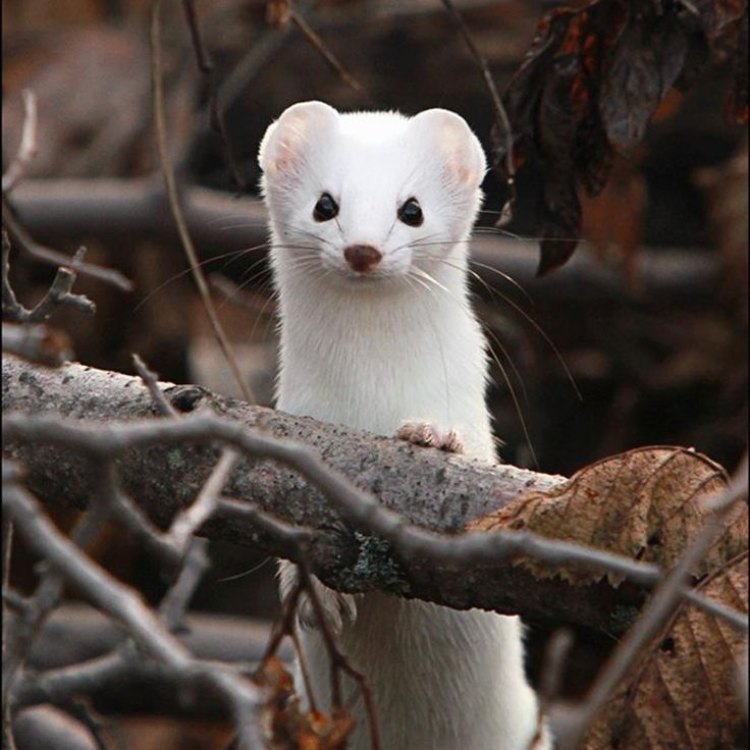
Ermine
- Adult Size: Small
- Average Lifespan: 2-3 years
- Reproduction: Sexual
- Reproductive Behavior: Polygynous
- Sound or Call: High-pitched chirping
- Migration Pattern: Non-migratory
- Social Groups: Solitary
- Behavior: Nocturnal, territorial
- Threats: Habitat loss, climate change, hunting
- Conservation Status: Least Concern
- Impact on Ecosystem: Controls rodent populations
- Human Use: Fur trade
- Distinctive Features: Black tip on tail, winter coat turns white
- Interesting Facts: The ermine is also known as the stoat or short-tailed weasel.
- Predator: Large birds of prey, foxes, coyote
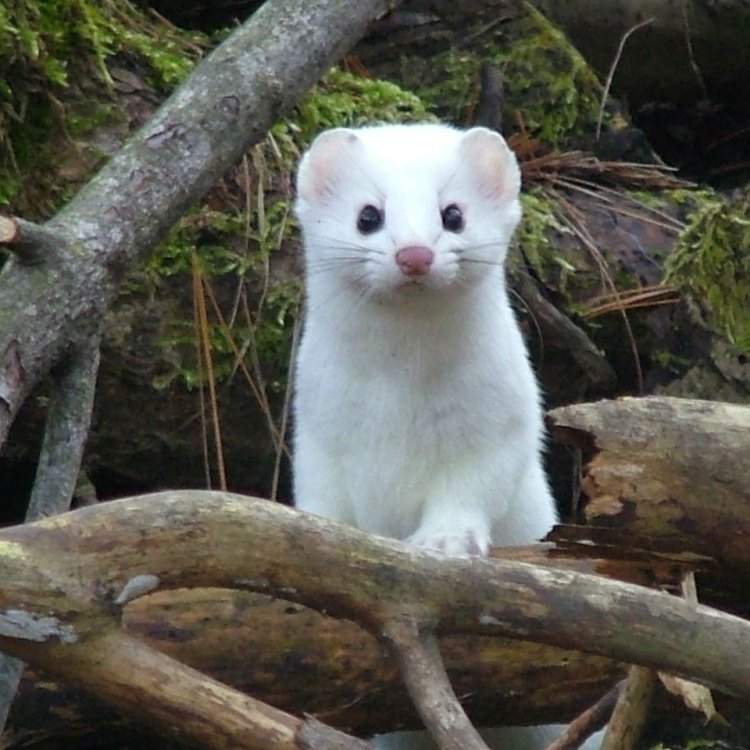
Mustela erminea
The Mysterious Ermine: A Small but Mighty Predator
Nestled among the wildlife and nature of the Northern Hemisphere, the ermine may not be the first animal that comes to mind. But don't let its small size fool you - this elusive creature is full of unique features and behaviors that make it a fascinating species to learn about. From its striking winter coat to its solitary lifestyle, let's explore the world of the ermine and uncover what makes it such a remarkable animal.Small but Mighty
The ermine is a small carnivorous mammal, measuring between 6 and 13 inches in length and weighing just 3 to 14 ounces PeaceOfAnimals.Com. Despite its size, this creature is considered a fierce predator and plays an important role in controlling rodent populations in its habitat. Its body is long and slender, with short legs and a small head. Its fur is thick and soft, varying in color depending on the season.The Ermine Lifecycle
The average lifespan of an ermine is 2-3 years in the wild, but it can live up to 10 years in captivity. Like most mammals, ermines reproduce sexually and have a polygynous mating system, meaning one male mates with multiple females. Breeding occurs in the spring and summer, and the female gives birth to a litter of 4-13 kits after a gestation period of approximately 1 month. The young are fully weaned after 3-4 weeks and reach sexual maturity within a year.A Voice in the Night
If you happen to live in the areas where ermines reside, you may have heard their distinctive sound - a high-pitched chirping. These vocalizations are used for communication and can be heard mostly at night, as the ermine is a nocturnal animal Egyptian Cobra.A True Homebody
Unlike some wildlife species that migrate annually, the ermine is a non-migratory animal and prefers to stay within its home range. These ranges can vary greatly in size depending on food availability and other factors, but typically cover 15-40 acres. Ermines are solitary creatures, only coming together during the breeding season when males seek out females for mating. They are also territorial, fiercely defending their home range from intruders.Threats to Survival
While ermines may seem to have a comfortable and secure lifestyle, they face several threats that impact their survival. Habitat loss due to land development, climate change, and hunting for their fur are all significant threats to the population of ermines. As with many other wildlife species, these factors are causing a decline in their numbers, making conservation efforts crucial to their survival.Conservation Status
The ermine is currently listed as "Least Concern" on the International Union for Conservation of Nature (IUCN) Red List, meaning it is not at risk of extinction. However, with the increasing pressures on its habitat and population, it is essential to monitor and protect this species to prevent it from becoming endangered.A Key Player in the Ecosystem
Despite its small size, the ermine plays a critical role in its ecosystem. Its diet consists mainly of small rodents, which can cause significant damage to crops and other vegetation. By controlling rodent populations, ermines help maintain a healthy balance in their habitat and ensure the survival of other species that rely on these resources.Human Use and the Fur Trade
Unfortunately, humans have also long been interested in the ermine, not for its role in the ecosystem, but for its luxurious fur. Ermine fur has been a popular material for clothing and accessories, particularly during the Middle Ages, when it was associated with royalty and wealth. Today, the demand for fur has declined, but it remains a lucrative trade in some parts of the world, posing a significant threat to the survival of ermine populations.Distinctive Features
One of the most distinctive features of the ermine is its black-tipped tail. This unique marking helps to differentiate it from other similar species, such as the least weasel. Additionally, during the winter months, the ermine's coat turns completely white, except for the black tail tip. This adaptation helps the ermine to blend in with its snowy surroundings, making it a more effective predator.Interesting Facts
Did you know that the ermine has many names? It is also known as the stoat, short-tailed weasel, and white weasel, among others. This elusive creature is highly adaptable and can be found in various habitats, from forests and grasslands to mountain ranges and even urban areas. It is also an excellent swimmer and is known to hunt fish in some regions.Predators and Survival Tactics
Despite its ability to adapt and survive in various environments, the ermine still faces several predators, including large birds of prey, foxes, and coyotes. To defend itself from these predators, the ermine employs several tactics, including burrowing and emitting a foul-smelling odor. Its slender body also helps it squeeze into tight spaces where predators cannot reach.In Conclusion
In the world of wildlife, the ermine may seem like an ordinary animal, but its unique features and behaviors make it a fascinating and crucial species to protect. From its small size and distinct vocalizations to its solitary lifestyle and important role in controlling rodent populations, the ermine is truly a remarkable creature. As with all wildlife, it is essential to strive for coexistence and ensure that the threats facing this species are diminished, allowing it to thrive for generations to come.
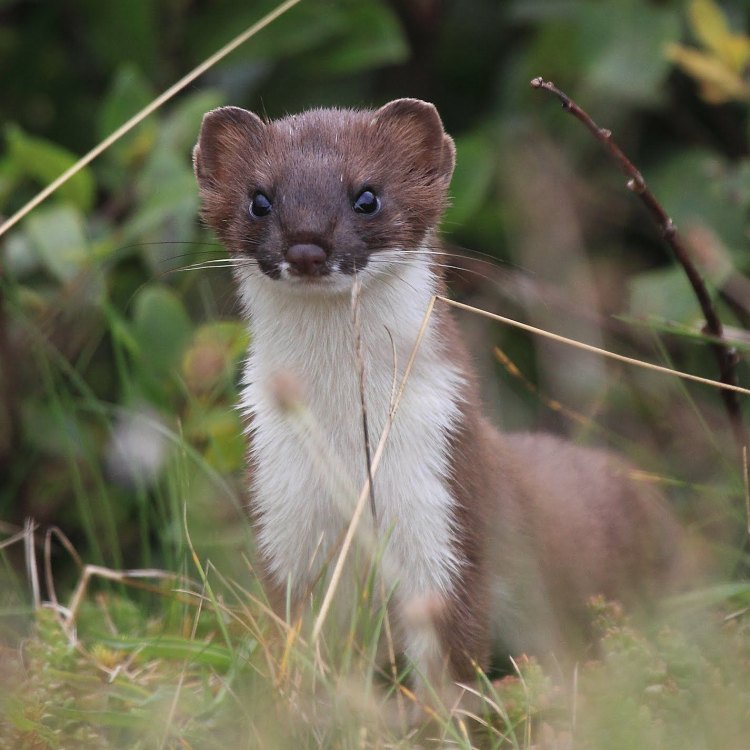
The Fascinating Ermine: The Snowy Predator of the North
Disclaimer: The content provided is for informational purposes only. We cannot guarantee the accuracy of the information on this page 100%. All information provided here may change without prior notice.


